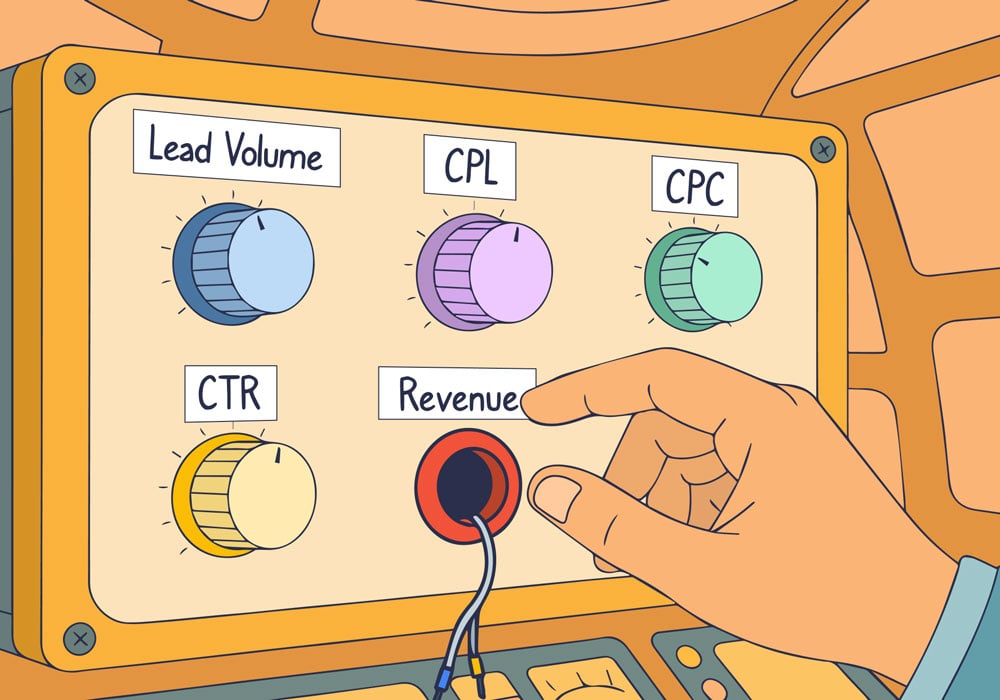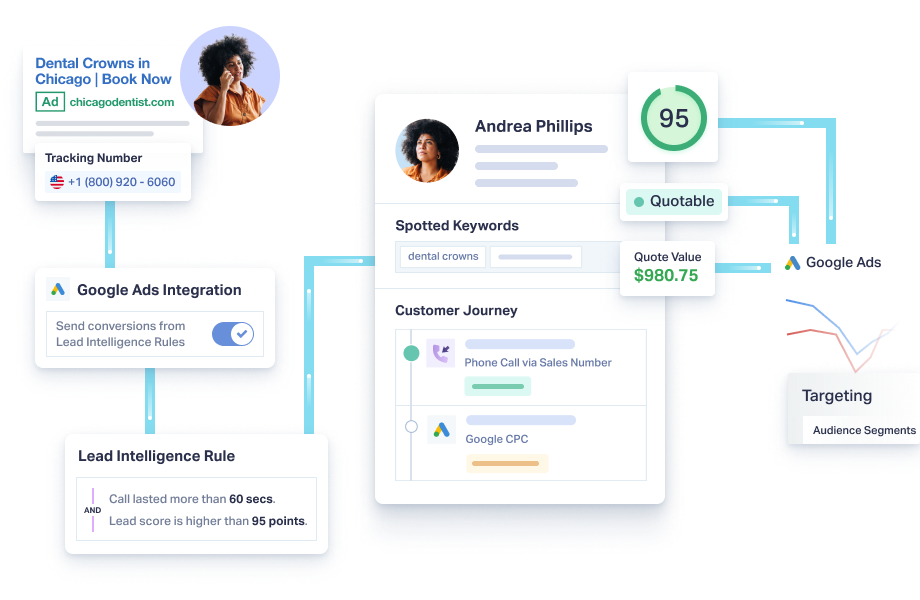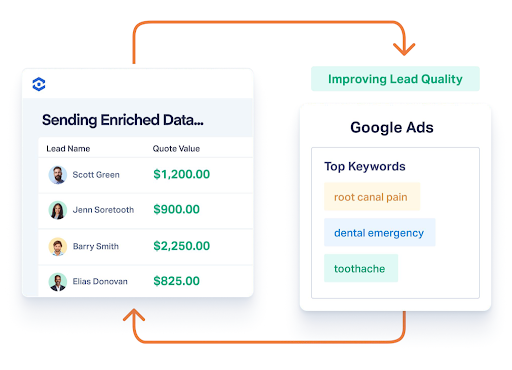
You can’t tell your ad platform to chase bigger deals. You can’t tell it which customers actually spend money, renew, or buy twice.
You can feed it conversion data, but as far as it’s concerned, a $10 lead and a $10,000 customer look exactly the same.
Sales can go after higher-value prospects. They can steer the pipeline toward profit. Marketing doesn’t get that lever.
The algorithm only learns what it can measure—and it can’t measure revenue. So it keeps optimizing for the easiest wins: cheap clicks, fast forms, low-value conversions.
You want growth. The machine wants volume.
And until those goals align, you’ll always be paying for leads that don’t pay you back.
The Problem: Algorithms Chase Conversions, Not Cash
Google Ads has one goal: deliver more of whatever you tell it is a conversion.
Form submission? Conversion. Phone call? Conversion. Chat started? Conversion. Every signal gets treated identically. The algorithm sees 300 conversions and learns to find more people like those 300.
It has no idea that 40 of those conversions generated $180,000 in revenue while 260 generated nothing.
So it optimizes toward volume. Finds cheaper clicks. Scales audiences that convert frequently. Your cost per lead drops while your cost per customer climbs. The dashboard looks better; the bank account doesn't.
Why Standard Conversion Tracking Fails
The issue is the signal, not the algorithm.
You're telling Google a form fill is success when the real success is a form fill that actually closes.
Those are completely different optimization targets.
Without revenue data flowing back to the platform, the algorithm is flying blind:
- Can't distinguish high-value leads from junk
- Can't prioritize audiences that buy versus audiences that browse
- Can't optimize toward profit, only toward activity
The algorithm is supposed to work for you, but you end up fighting it.
It wants to scale what converts cheaply. You want to scale what generates revenue.
But you never gave it revenue data, so it's optimizing for the wrong thing.
How to Take Back Control
The fix is to feed actual revenue signals back to ad platforms.
Track every converted lead to closed deal in your CRM. Export that data. Upload it to Google Ads with revenue values attached. Let the algorithm see that Conversion #47 was worth $8,200 while Conversion #143 was worth $0.
Adjust your optimization goal from "maximize conversions" to "maximize conversion value."
This works if you have clean CRM data, highly disciplined tracking hygiene, and time to manually sync revenue back to platforms every week, but most agencies need a system that doesn’t require such intense maintenance.
Why Agencies Use Automated Revenue Sync
WhatConverts feeds actual revenue data back to ad platforms automatically, so the algorithm optimizes for dollars instead of volume.
- Assigns value to every conversion and syncs with Google and Meta in real time
- Trains algorithms to find more high-revenue prospects and fewer tire-kickers
- Shifts optimization from cost per lead to cost per dollar generated
When the algorithm knows which conversions produce $5,000 customers versus which produce nothing, it stops optimizing for junk.
From Volume to Value
Five Star Commerce was burning budget on spam bookings and bots that Google counted as conversions. The algorithm optimized for cheap form fills—most worthless.
After implementing WhatConverts, they started sending only qualified leads back to Google as conversions—with actual sales values attached. This let them use value-based bidding to teach the algorithm to chase revenue, not just volume.
Cost per conversion dropped from $250 to $150. Ad spend doubled from $10K to $20K quarterly. PPC went from 15% of new business to 80-90%.
Same campaigns. Different optimization target. Completely different results.
Read More: How Five Star Commerce Slashed CPA by 40% and Scaled Their Agency [Case Study]
Why Optimization Matters
Every dollar you spend teaches the algorithm what to find more of.
If you're teaching it to find cheap conversions, you get cheap conversions. If you're teaching it to find revenue, you get revenue. The difference is whether you're feeding it activity signals or value signals.
Agencies that control their optimization engine with revenue data win better performance, higher ROI, and campaigns that scale profitably instead of just scaling.
Ready to point your algorithm at revenue?
Start your free 14-day trial of WhatConverts today or book a demo with a product expert to see how we help prove and grow your ROI.
Get a FREE presentation of WhatConverts
One of our marketing experts will give you a full presentation of how WhatConverts can help you grow your business.
Schedule a Demo
Grow your business with WhatConverts







